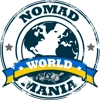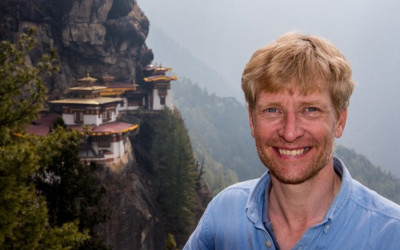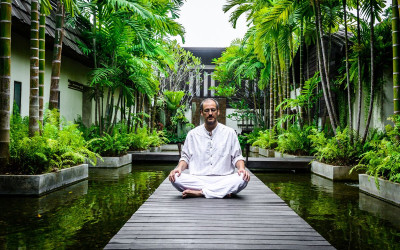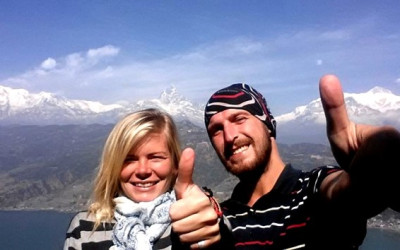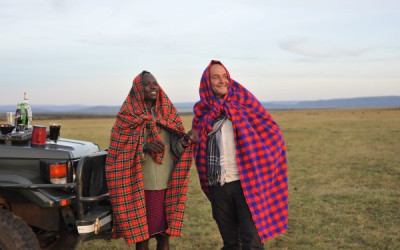For the first time, we are presenting a double interview with a travel couple – both professionals in the industry and who have developed their travel profiles independently to start with before ‘joining forces’ a few years ago. Jack and Sandy bring a flavour of South America to us!
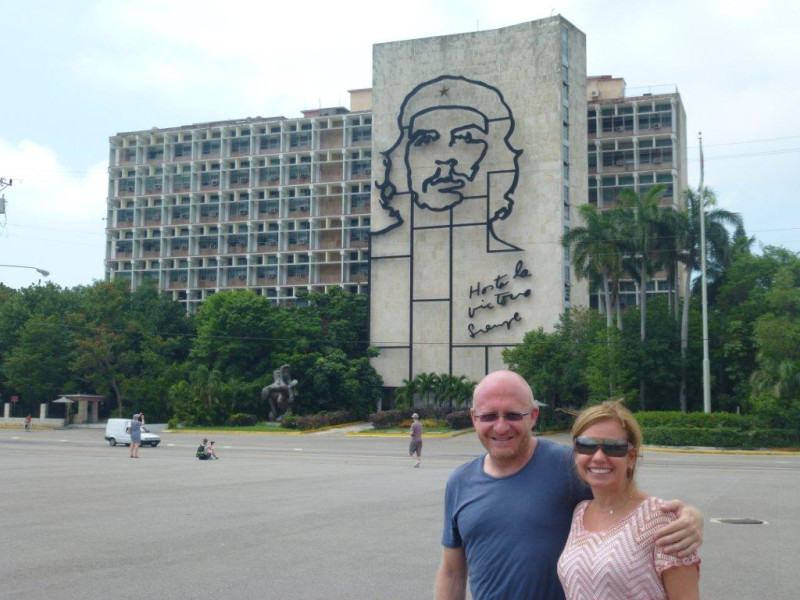
Havana, Cuba
Jack and Sandy, tell us something about your backgrounds and how your interest in travel emerged.
Sandy-
I was born in Medellin, Colombia, but at an early age my family moved to Panama where I grew up. All my life I dreamed of traveling but my parents were rather sedentary so only as an adult did I start to enjoy my passion.
My career ambition was to become an architect, but the one university in the city that offered the degree was constantly closing due to strikes as it coincided with Noriega´s last year in power. Since my father would not allow me to study abroad, I had to settle for the next best option: Communications and Marketing. I did not have the faintest idea how I would apply it or where I would work. While in college, I opened with my mom the first chocolate store in Panama, but at the time, my uncle had a travel agency for him to enjoy the pleasures of travel. However, since he was not on top of it, as his main business was something else, the agency was riddled with financial and labor problems. One day he approached me and asked me if I would be interested in taking over the business or else he would close it down. So, without any knowledge of the industry, I jumped into it and started to run the show and thus started to enjoy my childhood passion.
Shortly thereafter, the industry started to undergo major changes: airlines cut commissions and 9/11 brought a big blow. It was my chance to put into action my marketing and communication skills learned in college. Since people were reluctant to travel then, I figured I would show them the world, especially my neck of the woods in Latin America where terrorism was not a major concern, and so, for the past 14 years I have been the proud host, producer and director of my own travel TV show, Bon Voyage, which aired in Latin American cable and now airs only on local Panamanian TV as it became too much of a commitment on my personal life to handle a regional show (YouTube: bonvoyagetvsandy, in Spanish). Eventually, I grew the company into what is arguably one of Panama´s biggest and most reputable, and opened wholesale and representation divisions, and bought out my uncle. Today, I handle for the local and Central American markets brands such as Norwegian Cruise Lines, Oceania Cruises, Regent Seven Seas Cruises, various tour operators in Europe, and river cruises, among others.
I now realize everything in life has a reason: I was not meant to be an architect, but rather the owner of well-known agency, a master of social media, and host to the most seen travel TV show in my country.
Jack (From Chasing 193 vol. II) –
I was born in 1969 in Bogotá to a traditionalist and cultured family of Eastern European immigrant Jewish parents. As such, I was brought up under a heavy influence of World and Jewish history — a family tree where no two generations were born in the same place and with a very dramatic recent past. I lived sheltered within a small community and with a strong feeling of being part of a minority in an overwhelmingly Catholic, third world country, still backward, where FARC guerrillas and Pablo Escobar´s war on society were the norm and the mentality of people was not yet open to the wider world. But even so, life was great and happy.
The sense of being different was always important. Since very young, I grew up with a strong inclination toward world affairs, politics, cultures and with sufficient exposure to world travel. I distinctly remember sitting on my dad’s lap and reading maps, skimming through the Encyclopedia Britannica, and learning from him about world history every night before going to bed. To him I owe a huge head start in life.
I had the fortune of entering the world of traveling at a very early age. Every summer I would visit my maternal grandparents in Budapest. We would spend two months together with the family and always, before the start of the school year, we would go to some other place in Europe. Maybe this marked me from an early age as different; Hungarian, rather than English, was my second language. Life behind the Iron Curtain was the first ‘other world’ that I knew, and not the beaches of Cartagena or the parks in Orlando. I got accustomed to watching the news of the Vietnam and Angola wars under the Soviet prism and not the American. Getting to Hungary over 40 years ago was a long journey, one that implied changing planes many times in different countries — the weather, the way people dressed and the language would change at every stopover. In each destiny I learned one more history, heard a different language; tasted new flavors, learned about a new hero or anti-hero, about a new God. And everything, absolutely everything, would become a new adventure.
I was not yet 10 when I realized through the Guinness Book of World Records that there were people truly dedicated to seeing the entire world and that it was indeed achievable. I remember reading about a Bengali fellow who had been to about 154 countries. When I turned 15 and had been to 15 countries, I realized that life was not long enough to continue at such a slow pace. When I finished high school, I had already traveled around many European countries and some places in the Americas. For my high school graduation, my father allowed me to choose the destination I wanted to go on vacation. His surprise couldn’t have been greater when I told him we’d go to South Africa. It was with that whimsical moment followed by that trip that I opened a new page in my travels, now to remote and exotic destinations.
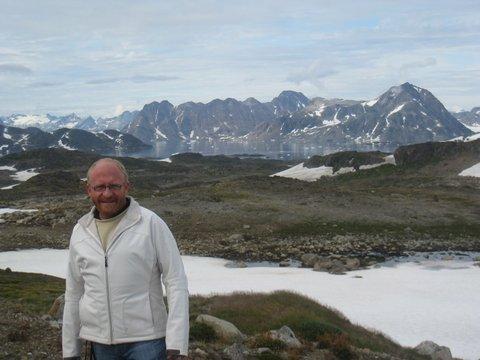
Jack near Kulusuk, Greenland
You both live in Latin America. What are the pluses and minuses of living there?
Ah! The wonders and troubles of tropical third world places!
For us, Latin America is home. We were both born in Colombia at a time when it was a very parochial part of the world. Cities were small, communities were tight, and you knew everybody. We have lived through years of Narco Wars or under the rule of the likes of General Noriega. We grew up living in danger of kidnappings, muggings, car bombs or invasions. But we also lived sheltered lives with plenty of privileges. Latin America can be a cheap place to live and one that takes up a lot of adrenaline.
Among the pluses we can say that if you are middle-upper class or above the place offers a lot more good for your private, family life than if you live in the US or Europe (family closeness, bank for your buck, etc.). Life is often an adventure with plenty of places to visit with extreme contrasts (landscape, culture, food, music, and architecture change greatly within a few hours’ drive). It´s a place where you can more easily make an impact in the world of business and culture, or in your community. Latin Americans can be happy people, always ready to make fun, laugh, dance, be passionate about football (yes, that´s how we call it in 192 countries). Panama and Colombia are perhaps the most USA-oriented countries, so TV shows, commercial brands, music and lifestyle have always kept us close to Empire up north, mostly for good things.
The minuses are the adrenaline wasted trying to get things done due to the mediocrity of the system (traffic, corruption, laws and regulations), the constant uncertainty about what the future may bring, and watching years of earnings suddenly vanish due to devaluation or unrest.
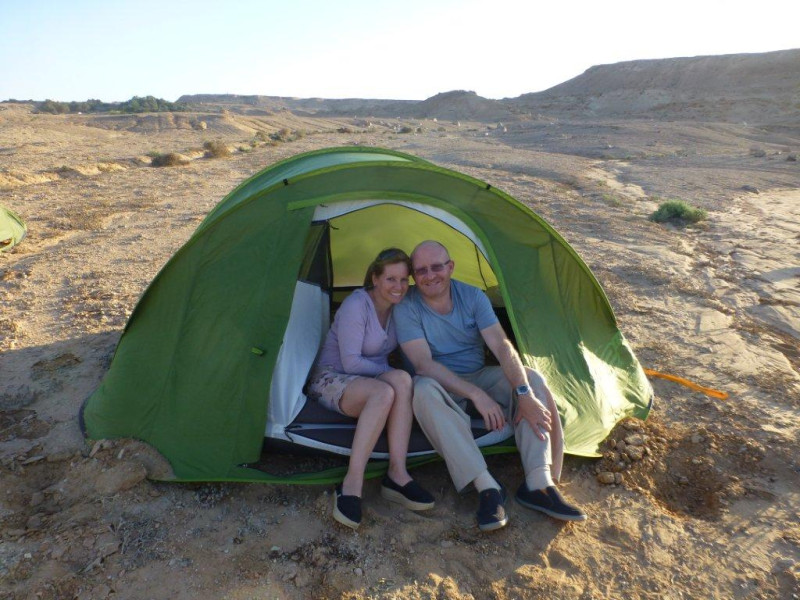
Camping in Western Sahara
Jack you are in Colombia, while Sandy you are based in Panama City. In fact Panama was part of Colombia until 1903 if we are not mistaken. How are the countries different and how are they similar? How have they changed in the past 10 years?
Panama became independent in 1903 after hardly wasting a bullet. At the time, the USA ventured south looking for a place to build the canal in a Colombia riddled with civil wars. Oddly enough, the map still displayed in Colombia´s emblem is that of Panama and not of Colombia! But countries parted ways then due to American control over the isthmus and because our countries are separated by the thickest, muddiest jungle in world, a place where even today the Transamerica Highway cannot connect. Panama has had the US Dollar as its currency so there is no inflation or devaluation to worry about, but on the other hand, Panama has had a long history of dictators and coups whereas Colombia prides itself of having the most solid democratic record south of Rio Grande (surprised?). However, with the exception of the 1990 Invasion, Panama has been quiet while Colombia always made bloody headlines.
Obviously, more people speak English in Panama than in Colombia, and per capita income is considerably higher, but it´s pretty much a one-city country with a small population and all the trade in the world passing through the canal. Panama is a country of immigrants whereas Colombia has been by far the country with the fewest immigrants in the area. However, at 50-million strong and having a very complicated geography, Colombia is perhaps the most complex country in LatAm. In Panama people have always been able to walk the streets freely (if they can bear the humidity) whereas in Colombia that is a modern day luxury. Panama is a city with a superb skyline but hardly offering anything to do but shopping, while Bogotá is a chaotic metropolis of 10 million people offering everything you can imagine in terms of film festivals, concerts, jazz, rock, gourmet cuisine, theatre, galleries, conferences, bars. In Panama you know everybody; in Bogota you knew everybody.
The past 10 years have seen Panama grow to become a very modern city with a superb airport hub and boasting rapid growth. Colombia is undergoing growing pains. It grew quickly but it also devalued quickly. Now we are about to open a radically new chapter in our history with the signing of the peace deal the FARC narco-guerrillas. Panama´s economy is quiet now, but Colombia is at a crossroad with no certainty going forward.
Do you always travel together as a couple or do you go off on your own as well nowadays? What type of travel do you prefer and what destinations do you like?
For the past 4 years, since we met, the only trips Sandy took alone were because I could not accompany her due to work on my end (a couple fam-trips cruises for other travel agent clients -part of the perks of being in the industry is Sandy getting invited to visit new destinations or invited bring along other agents-. Oh yeah, and the one time she was invited by TAP to film a documentary about Portugal precisely during the World Cup which I could not miss – yes, because of work too). So, if not because of force majeure, we always travel together. Because of her trade, Sandy can organize fam-trips and wonderful cruises while I take care of detailed road trips and remote destinations, and we both can attend the same travel shows and then jump for a few days somewhere new. After so many years of traveling with friends or alone, we have found each other, our perfect match to travel the world together. For us, any destinations and the combinations of different styles of travel is where we find our balance: a trendy cruise, road trips across Siberia, nice towns in Europe, a beach escapade, a jungle. We won’t say no to anything and get on a plane fast if the opportunity arises.
We actually met at the airport in Dakar and traveled for 10 days through Senegal, The Gambia, Guinea Bissau and the Cape Verde islands. If we managed that on our first date, we are certainly made to travel together anywhere and forever.
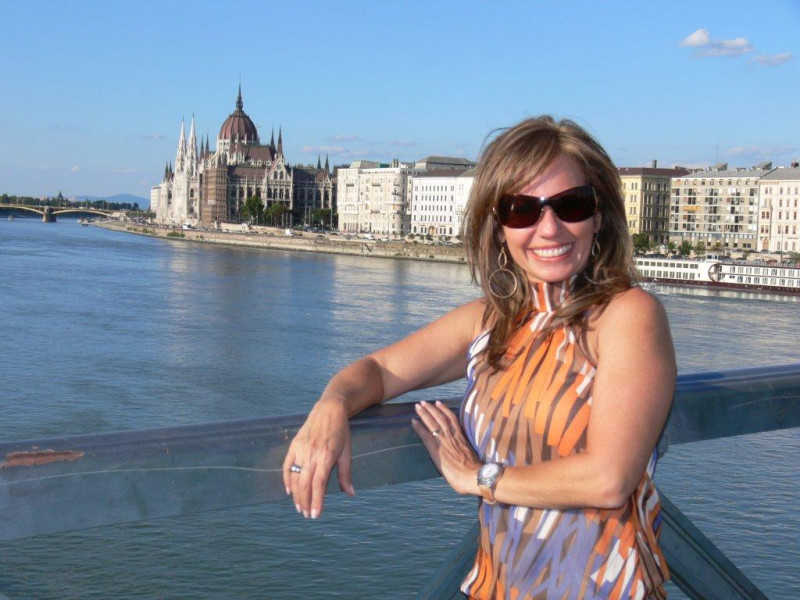
Sandy in Budapest
Are you aiming to do all the countries or not? What are some places on your bucket list and why?
We´ve known each other only for four years so there are places that we will repeat so that the other one gets to see them. Luckily,
Sandy- Health providing, yes! It would be the thing I would love to do the most in life. I would love to visit all of them. Specially, I would love to visit every corner of wild Africa and intense Asia, every exotic and remote place, every place that is filled with animal life. I have always had pets around me. Had I not had my agency I would have spent my life working with animals in Africa, perhaps as a photographer of wild life.
Top on my list are China, Tibet, India, Kenya, Tanzania, Botswana and Uganda.
Jack – As I child I became obsessed with the political map of the world, so yes, I always wanted to conquered the full list. However, over the years, learning more about history and geography, I became more concerned with travel lists. I am in no rush to check every country soon. Much rather, I want to get to all the regions of the third world, those that will change or disappear rapidly. I am in no way concerned with far-away rocks in the middle of the oceans but would not rule them out. I want to connect the dots by car and paint the map from corner to corner. I enjoy the feeling removed from the modern world and isolated. In my bucket list are North Korea, Russia´s northern Caucasus, Antarctica, remote areas of China and India. The feeling of remoteness always captivates me (whether geographic or cultural). Places with political mess are also high on my list.
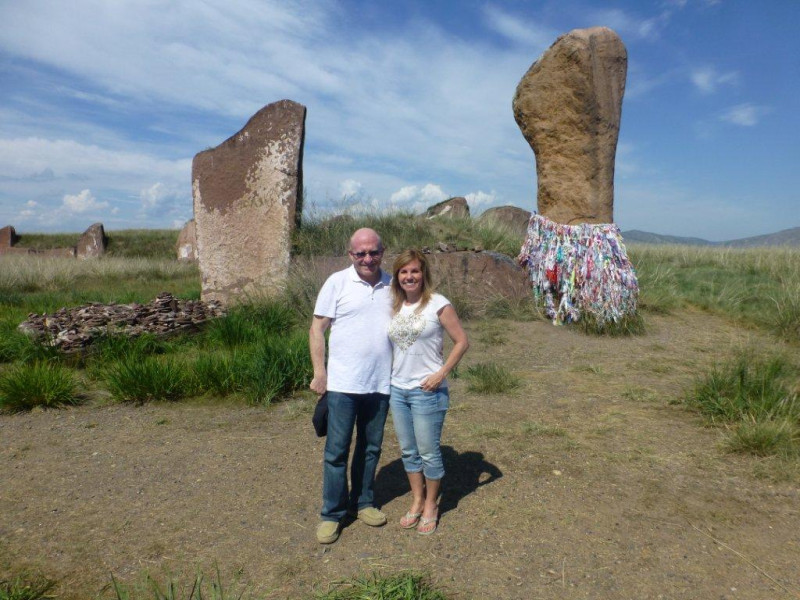
Khakassia, Russian Federation
Tell us a travel story that really made an impact on you.
Sandy- The story when I met my soul mate. Four years ago I was new to Facebook and searching for family. Suddenly, a picture captured my attention and I started to look at his profile, it was Jack´s. I noticed he owned a hotel in Bogota I sold before in my travel agency so I thought it would be great to connect with him for business. But then I saw he was an extreme traveler, sharing the same passion I have. I requested his friendship and immediately he replied. We started chatting and feeling as though we had known each other for life. We knew people in common and shared same values. From Facebook we moved to Skype, but even though we only lived an hour away by plane it proved difficult to meet. Jack had a 10-day trip planned for West Africa to which he invited me to join, so in short, and after thinking about it for a while, I decided to join him. Long story short, we met for the first time at the baggage claim area at the airport in Dakar, Senegal. Since then, I have been the luckiest woman having found the love of my life, the person with who to share my passion for travel.
Jack – Eastern Europe in 2010. A week with family in Budapest and then solo from the Baltics to Balkans — 12 countries, 3 autonomous republics or places that don´t exist. A part of the world of unrivalled intense history, shtetls, death camps, Chernobyl, crazy Balkans, ethnic cleansing, outstanding guides, diverse cultures, long hours, plenty of exciting border crossings, good music, and soulful walks along city promenades. A trip I started with my dearest people and brought me closer to my roots, in deep contact with world affairs, and a great sense of self-assurance. A trip that from beginning to end was simply perfect to the soul, mind and camera.
Jack, you are the owner of a hostel in Bogota. What are some of the joys and challenges of operating this? Tell us more about it all!
Actually, not a hostel but the hotel that was rated Best in Colombia by Tripadvisor back in 2013 (welcome fellow travelers and enjoy the benefits of being part of the TBT community!). It´s a mid-size, all-suite, full-service hotel with conference rooms, and it is my home when I am in Colombia. And since it is also home, it comes with the headaches of never leaving the office. Among the joys is feeling a daily closeness to the world being able to host guests and clients from over 80 countries in 2016 alone. Also, a hotel is arguably a prime source for bizarre anecdotes. Challenges include living like in the movie “Groundhog Day”: I wake up and it’s February 2nd again and again; the issues are pretty much repetitive.
Sandy you are the owner of a travel company based in Panama. What exactly do you do? What are some of the gems of Panama that you suggest for our readers?
I run Columbia Tours, a 25 year-old travel agency and also wholesale travel agency plus representations office based in Panama City (I´ve been with the company for 20 years). We specialize in cruises, European circuits, tourist packages around the world, but I don´t do any receptive business. I can recommend places in my country but I simply don´t handle the logistics here.
For those who would like to visit Panama, the places I recommend are the islands of San Blas with their colorful native Kuna Yala Indian population, and Bocas del Toro, both on the Caribbean coast; the mountain area of Chiriquí near the border with Costa Rica, and of course, the Panama City with its superb skyline, the amazing canal, and the old town of Casco Viejo.
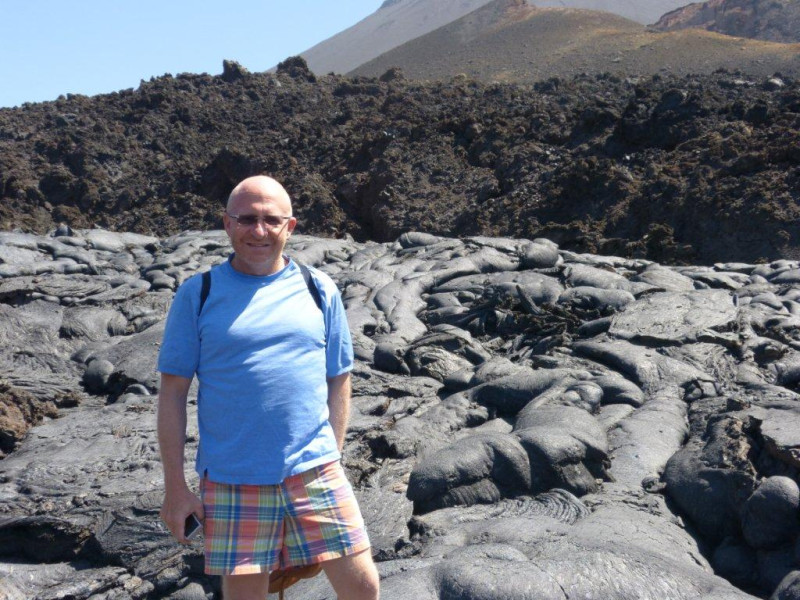
Fogo, Cape Verde
And Jack, what are some of Colombia’s must-sees and some of its lesser known gems?
The black sheep of the family becomes the rising star of world tourism. Lonely Planet ranks Colombia as number 2 in its list of top destinations for 2017. Word to the wise: full peace is still a long way, but the country has been improving by leaps and bounds in terms of peace and infrastructure. If you come to Colombia, be street-wise and don´t venture out to remote places without doing your homework first.
Must-sees include Cartagena with its walled old city and fortress and the near-by coral reef Rosario Islands. About 4 hours north and along the coast you reach Tayrona Park and from there high up on the mountain visit the arhuaco tribes and the archaeological site of Ciudad Perdida high in the snow covered Sierra Nevada de Santa Marta (the highest mountain in world standing by the sea, at 5750 mts). Medellin is one of the best examples of turn-arounds: you can still visit sites made famous by Pablo Escobar but today it´s the only city with a metro line and one of the most technologically advanced world-wide. A few hours south of Medellín, by car, the coffee region is a great destination for picturesque small town, beautiful farmlands and hikes up the snow covered Nevado del Ruiz. Bogotá and its Gold Museum or the near-by Salt Cathedral of Zipaquira, funky graffiti and the unique Andres Carne de Res restaurant in Chía makes for a good three days.
Lesser known places worth your while include the archaeological sites of San Agustin and Tierradentro closer to the border with Ecuador, the deserts and tribes of the Guajira peninsula further north from Tayrona, the Amazon river in the deep southern jungles, the famous multi-colored Caño Cristales river, the UNESCO town on Mompox along the Magdalena river a few hours south of Cartagena, the remote island of Old Providence near Nicaragua, diving in the island of Gorgona on the Pacific coast, the colonial towns of Villa de Leyva and Barichara and the Chicamocha canyon north of Bogotá. For the really adventurous, I recommend Jirijirimo falls in the Vaupés jungles, taking a raft along the Orinoco River, reaching and diving in Malpelo island way in the Pacific Ocean, and hiking snow covered Sierra del Cocuy. Party goers will be delighted in Bogota, Medellín, Cali or Cartagena and gourmet tourists will have plenty to do in the capital. Colombia is also the best place for bird-watchers and for them there are plenty of guides to take you to mountains and jungles and be delighted with over 2.000 species.
And as far as gems are concerned, Colombia accounts for roughly 70% of the world emeralds. Don’t head to the mines, but perhaps buy one on your way back.
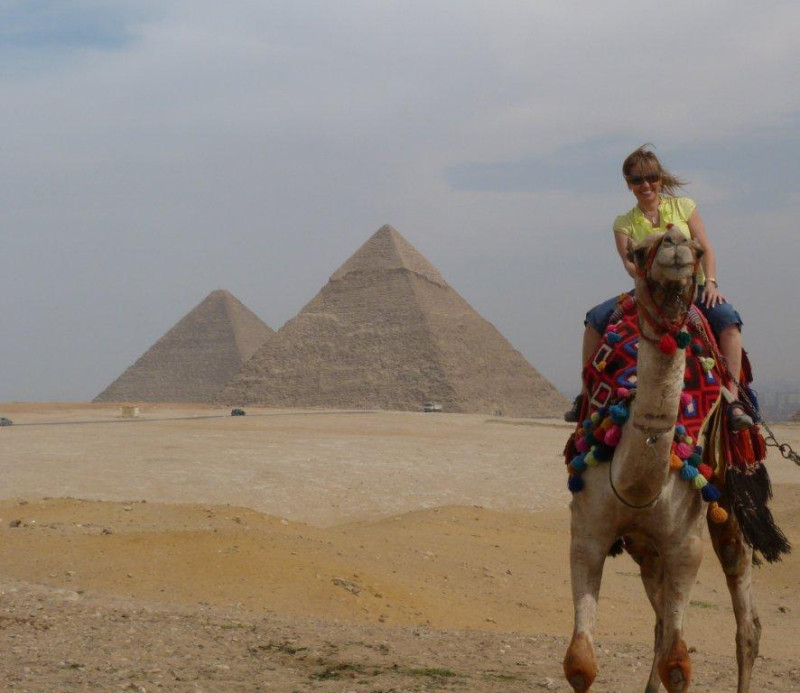
Giza, Egypt
You are both Jewish – has that impacted on how you see the world and how you travel? What about other people’s perceptions of you, if any?
Jack – Don´t blow our cover! We still have some places to visit where our identity makes it difficult. Many countries ask for religion when filling out visa application, and some airlines don´t like to offer kosher meals and our last names are distinctly Jewish. I only eat kosher meat and Sandy is vegetarian so it´s easy to figure us out. I also travel with my tfilin (prayer phylacteries). Having said that, uncomfortable moments while traveling because of our identity? I can recall the time back in ´85 when I flew from Zurich to Budapest with a group of Algerian “youngsters” going for training in Hungary, and again in Hungary in ´90 while attending a football game and surrounded by neo-Nazis, Other than that, just a collection of random idiots (a taxi driver, a tour guide, etc.) in odd places who for no apparent reason and far from anything Jewish, Israeli or Middle Eastern, made it a point to make anti-Semitic comments without them knowing who we were. Mostly, however, we have met people whose feeling toward Jews is one of admiration. What is of significance is to know that Jews and/or Israel are an issue all over the world unlike any other minority, and for MOT´s (members of the tribe) it´s a binding force among people that have only just met.
But more importantly, since I was very young I was always passionate about history in general, and Jewish history in particular. So I have made it a point to visit remote and unique Jewish communities or archaeological sites. Places as diverse as Ethiopia or the Volga Delta (ruins of Itil, the capital of Khazar Empire), scattered synagogues across Siberia, or unique communities in Yangon, Voronezh, India, or Bukhara. We make it a point to visit Jewish site anywhere we go, whether they are synagogues, ancient cemeteries, or often is the case, ghettos, concentration camps and all those reminders of a complicated history. But together with that we visit sites that indirectly have to do with Jewish history, or that represent the “other side” of the story. These may be Arab lands, churches, statues to “great” leaders like Bogdan Khmelnitsky or San Martin Ferrer.
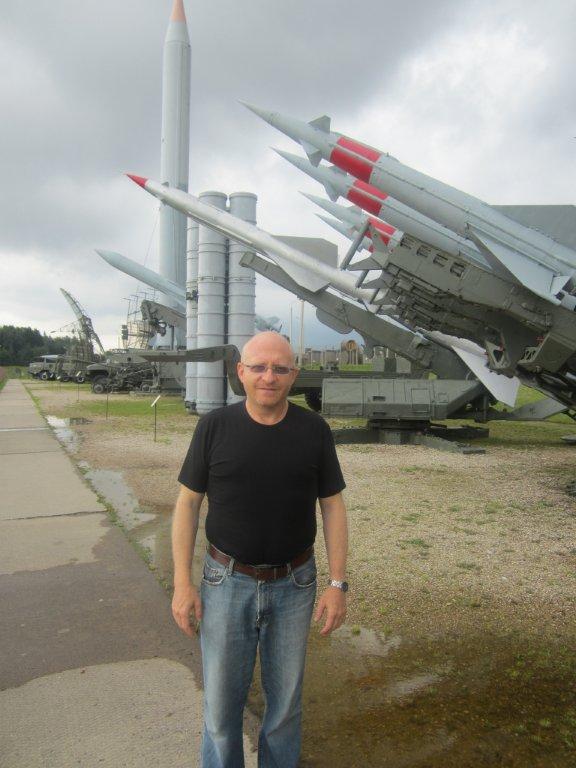
Belarus
So, what are your travel plans for 2017?
Well, thankfully we get to plan trips on the spur of the moment that I´m sure are not yet in our plans, but in late March Sandy got invited to visit Vietnam and Cambodia and, taking advantage of this trip, we will do a bit of Thailand, Brunei and Malaysia. In late July we will be cruising the Baltic capitals with a big group Sandy put together and drive a bit on our own through northern Germany. For November we are hoping to do another 30-day cruise to take us from Dubai to Cape Town stopping in other ports in the UAE, Oman, various spots in India, Maldives, Seychelles, Madagascar, Tanzania and Mozambique. Needless to say, there will also be various trips between our homes in Panama, Bogota and Miami.
Finally, if you could invite four people from any period in human history to a dinner, who would they be and why?
Sandy – Since travel is my life, my invited guests would be Marco Polo and Ernest Shackleton in order to learn what motivated them to reach the places they visited, what their expectations were, try to understand how they felt with new, cultures or interacting. And I would also invite Jacques Cousteau, somebody with the same great love of animals as me.
Jack – I would invite a group of discoverers with no blood on their hands: One would be an unknown Rhadanite from the times of Marco Polo, one of those merchants that crossed unchartered territories along the silk road and found mysterious cultures and unfathomed landscapes along the way, dealt with new spices, learned new languages and left us without telling their stories. Along those lines, I would invite Jewish traveler Benjamin of Tudela who visited remote Jewish communities in the XII century. Next to them would sit David Livingstone and either Lewis or Clark… Just to hear their stories of first time encounters.
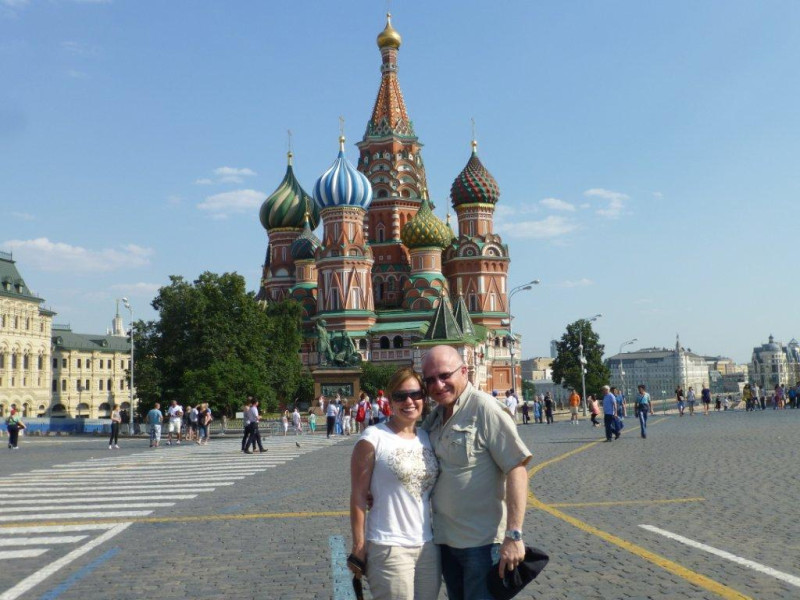
Moscow
The photographs accompanying this interview are from Jack and Sandy’s private collections.
